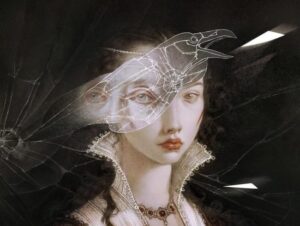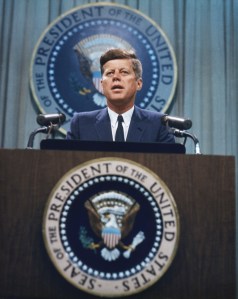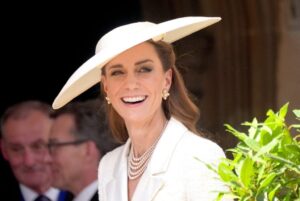In the Show of the Summer, Rosa Barba Remakes the World

Rosa Barba has a way of taking our world’s most magical and most fundamental elements, then folding them in on one another—taking them apart, making them anew. Since the 1990s, she has been remaking film into sculpture and astronomy into film, fascinated by how each of these things scramble time and space. For her latest exhibition at the Museum of Modern Art in New York, she upped the ante, turning a black box gallery into a cello. Long wires stretch from floor to ceiling as film projectors pull strips of celluloid across them. Scotch tape that holds together these splices that pluck the wires while passing over them, making low sounds, a celluloid symphony.
The exhibition, “The Ocean of One’s Pause,” is an unusual survey of 15 years of Barba’s work: over a dozen cinematic sculptures are displayed in one a room, arranged so that they almost become one work. Central to the show is Barba’s latest 25-minute film, Charge (2025), co-commissioned by MoMA and the Vega Foundation. The film was shotat CERN, the world’s largest particle physics laboratory in Geneva, and will be screened at Moynihan Train Hall and in Times Square, where the work is being shown as part of the “Midnight Moment” program throughout July.
At MoMA, the film builds to a crescendo of experimental music that is elegantly complemented by the mechanical clicks of various analog apparatuses Barba has used to make sculptures. Charge shows the sun through a telescope and a vast array of reflective solar panels in the Mojave Desert. Eventually, the screen cuts to white, illuminating the sculptures in MoMA’s black box. Here rigorous studies of light, whether solar or artificial, create a feeling of wonder. In a time of slick screens and black boxes, Barba’s mechanical tinkering feels refreshing, even urgent—a reminder that we have the agency to take things apart and put them back together anew.

View of the exhibition “Rosa Barba: The Ocean of One’s Pause,” 2025, at the Museum of Modern Art, New York.
Photo Jonathan Dorado. ©The Museum of Modern Art
You’re committed to analog film at a time when that’s kind of anachronistic. This is clearly about a lot more than just nostalgia. You mentioned in a conversation with Joan Jonas for Bomb that you couldn’t make your work using video.
It was never about nostalgia. Early on, I started to fragment the cinematic apparatus, partly as a way to go against immersion, trying to leave the viewer alert and activated, and in this mode of mentally changing gears. Mechanics are important for this kind of work.
There are many other reasons. I realized right away with my first film, Panzano(1990), that using an analog film camera really defined my work. It makes the process performative: you have to be very precise in how you deal with the limitations of the material and of time. Also, the object of the film projector has quite a presence in the room. Often, I work with non-actors, and I find that the big presence and loud sound of the film camera gives people a clear way of understanding they are being filmed, which makes them change gears and be who they want to be in front of the camera. That feels respectful, to me, and helps me get around some of the problems that come with filming people and voyeurism.
Even if I’m not filming people but rather the landscape, there is a kind of alchemy that comes from holding the camera, which has a certain weight that requires me to use my whole body. Questions like “how long can I hold a sequence?” start to define the length and the time of certain scenes. Increasingly, I have also been responding to various architectures, dismantling cinematic elements until they become sculptural, engaging the materiality of the machine.
Your work is thoroughly researched and often takes on scientific subjects, but it’s never didactic. It clearly resists telling people what to think and embraces mystery and unknowability. Often, it ends up being quite elegant. What role does beauty play for you?
My work always involves a search for the sublime in some way, and explores perception and how we look at things, even if they are dangerous or catastrophic—like with my film Bending to Earth (2015), which shows a uranium field. But there is always this sense of fragility: catastrophe and beauty are often very much linked, and I’m interested in walking this line. I’m also interested in the unstableness of knowledge, and in what we as human beings want when we try to reach beyond knowledge, and in how we want to inscribe ourselves.

View of the exhibition “Rosa Barba: The Ocean of One’s Pause,” 2025, at the Museum of Modern Art, New York.
Photo Jonathan Dorado. ©The Museum of Modern Art
It’s often beauty and enigma that get many people interested in studying things like astronomy. But many of the scientific formats like diagramming have this way of removing the mystery, whereas you retain the magic. You’ve long had an interest in the ways both astronomy and cinema can collapse space and time. That becomes almost meta in this exhibition, where you’re collapsing around 15 years of work until it almost becomes one installation. Where did that idea come from?
I’ve been working with this idea of creating a conference or dialogue between works for some time. When I was invited to curate an exhibition with works from the Reina Sofía collection in 2010, I showed different pieces switching on and off at different times. Before that, at the Venice Biennale in 2009, I made an installation called Coro Spezzato: The Future Lasts One Day, where different projectors were synchronized and the voices would turn off and respond to each other. But it was at the Neue Nationalgalerie [in Berlin] in 2021 that I really took off with this idea.
At MoMA, I wanted to focus on sound pieces and sculptural works that connect to the ideas in the main film, Charge. As I got to know the space, I became very attracted by its floor-to-ceiling window. Whenever I work with architectures, I look for kinds of membranes to bring the inside out and the outside in. I did that here on both sides of the space; if you look up to or down from the fifth floor on the ledge, the exhibition there spills in and out. I wanted to understand the space as an experimental laboratory and deal conceptually with the idea of the light—with having the space transform from morning until evening. In the beginning of the day, the sculptures are more prominent, but over the hours, the film gets brighter; there is no hierarchy as to which works are more dominant. I started understanding the whole space, with its incredible height, as an instrument. I tested the wire pieces for a long time in my studio, but had to retune them to the space as the whole gallery became a kind of cello body.
There are three-and-a-half minutes in the film where you just hear the sounds of the wire pieces becoming louder, the scotch tape plucking the wires pizzicato. The scotch tape returns in this kind of prismatic circular sculpture that is also based on an early experiment about how to make our colors visible for our eyes.

Still from Rosa Barba’s 2025 film Charge.
© Rosa Barba
You’re always combining film and sculpture, and here, the installation itself becomes kind of time-based. Tell us more about the new film.
As in all my films, I was interested in how we as human beings inscribe ourselves: in how we want to reach beyond, in how we want to understand more about the universe. There’s so much that we don’t know about. I wanted to explore light in this vein, continuing my work on the overlap of astronomy and cinema, and taking it further, to the physics laboratory. I had this relationship [as an artist-in-residence] with CERN already; a few years ago, I filmed their cloud chamber and these collusions of light that they produce. Then I learned of this incredible radio astronomy lab[Nançay Radio Observatory] in the middle of France, on a piece of land was bought in the 1950s and kept free of all kinds of disturbances, so that scientist could just collect radio waves and gather knowledge. Light is used there to translate it all into code: in the middle of the film, a lens moves at the speed of the earth and reinforces the faint signs of radio waves. I’m interested in the space that is all around us, and its many dimensions and layers.
I filmed some experiments, one after the other, each introducing a different light source. The process was kind of alchemical: I was filming with a 16mm camera, having the light inscribed on material. I was able to capture things that were not visible with the more standard digital recording of the experiment—which was pretty exciting.

Rosa Barba performing in conjunction with the exhibition “Rosa Barba: The Ocean of One’s Pause,” 2025, at the Museum of Modern Art, New York.
Photo Maria Baranova. ©The Museum of Modern Art, New York
Tell us about the performance, too.
I’ve been developing this shutter system that reacts to drums for 9 years now: shutters open up in response to different frequencies. Recently I started working with a choir, because I’m also interested in how every human has a different scale of frequencies, and in how all these different frequencies produce different kinds of cinema. This is my first time working with one vocalist, Alicia Hall Moran, and one percussionist, Chad Taylor. I’m on the cello. I play the cello with the film projector, pressing the cello against a film that is running, and meanwhile the wire piece plays, too.
You can catch Barba’s performances at MoMA June 26–29.







